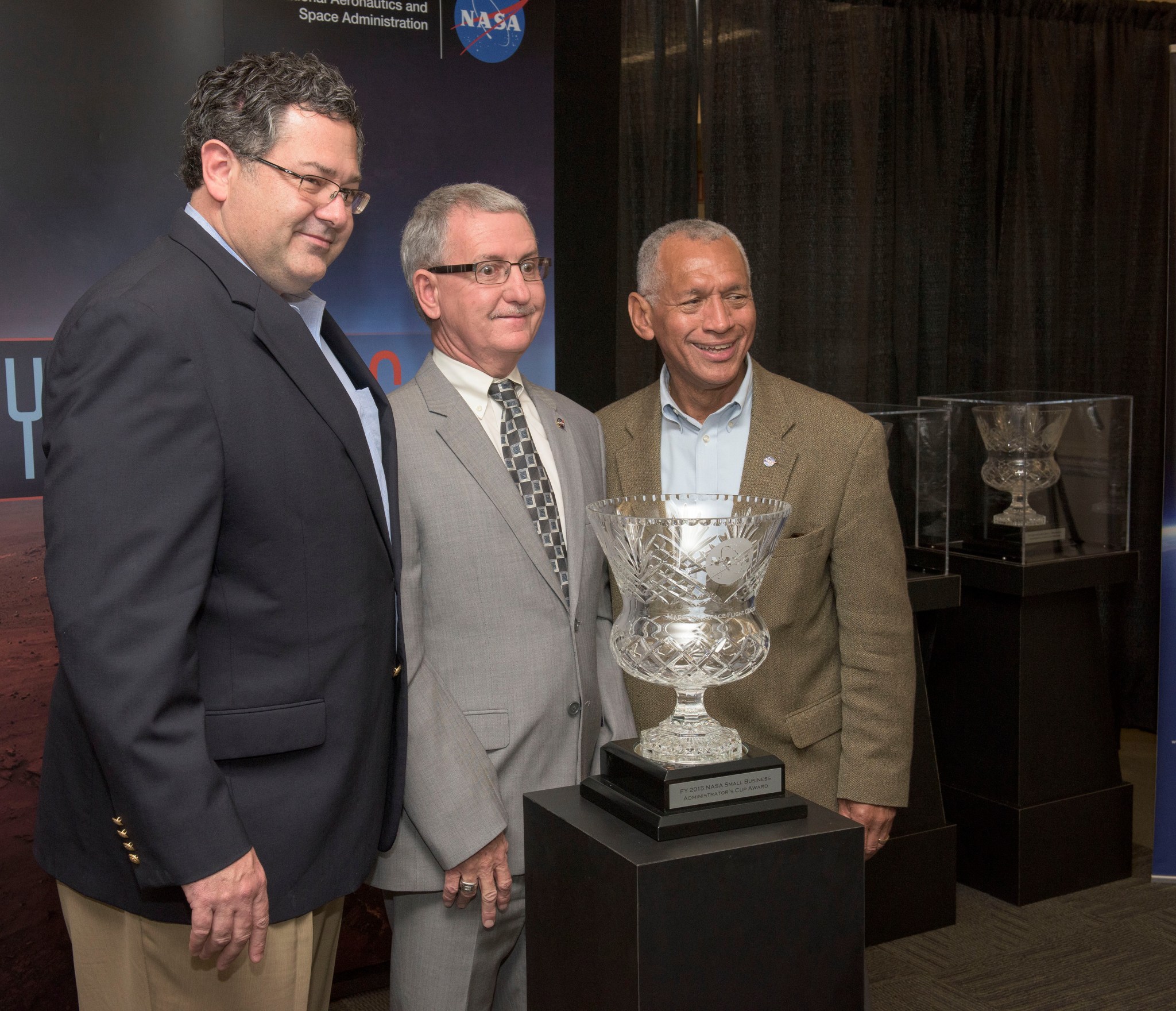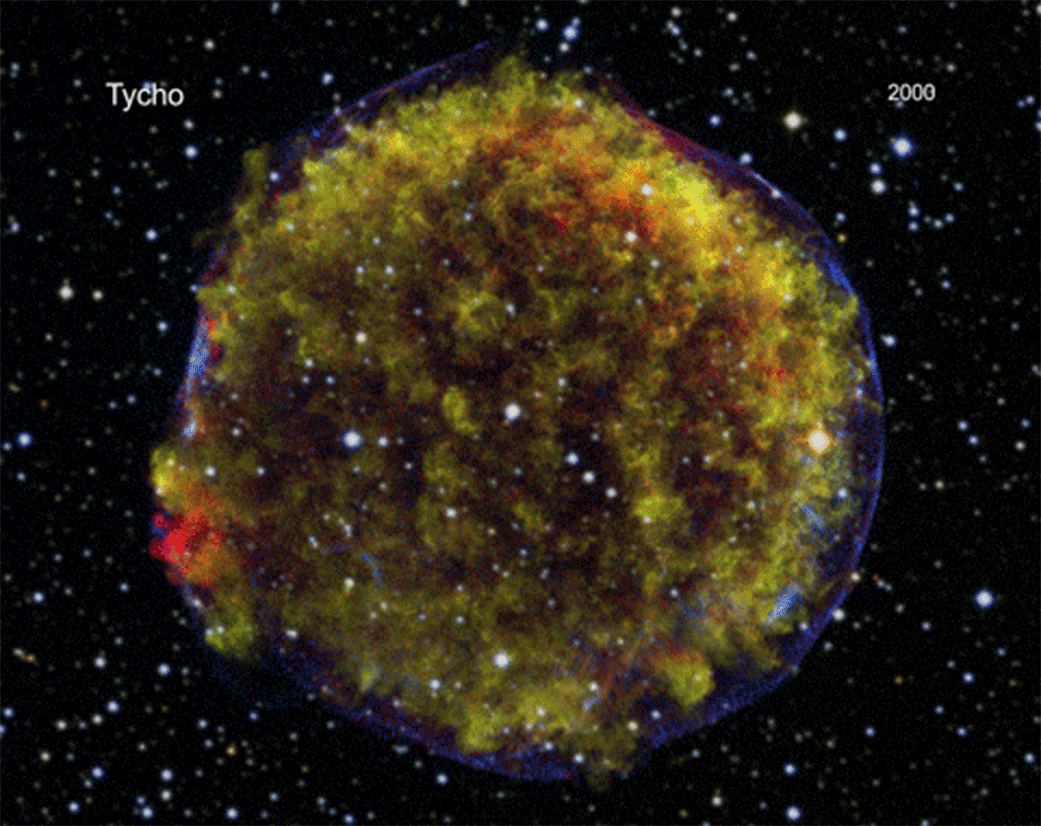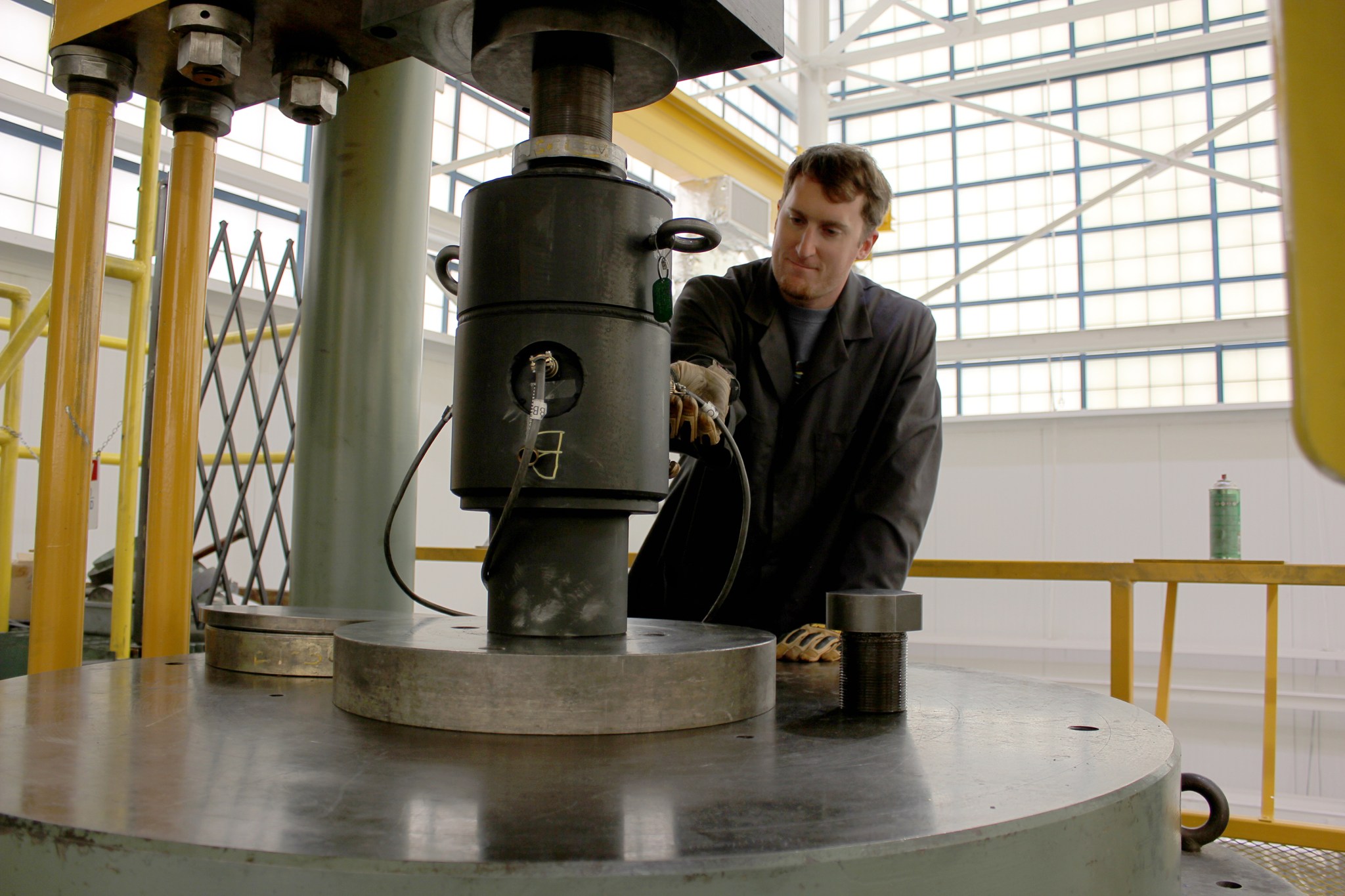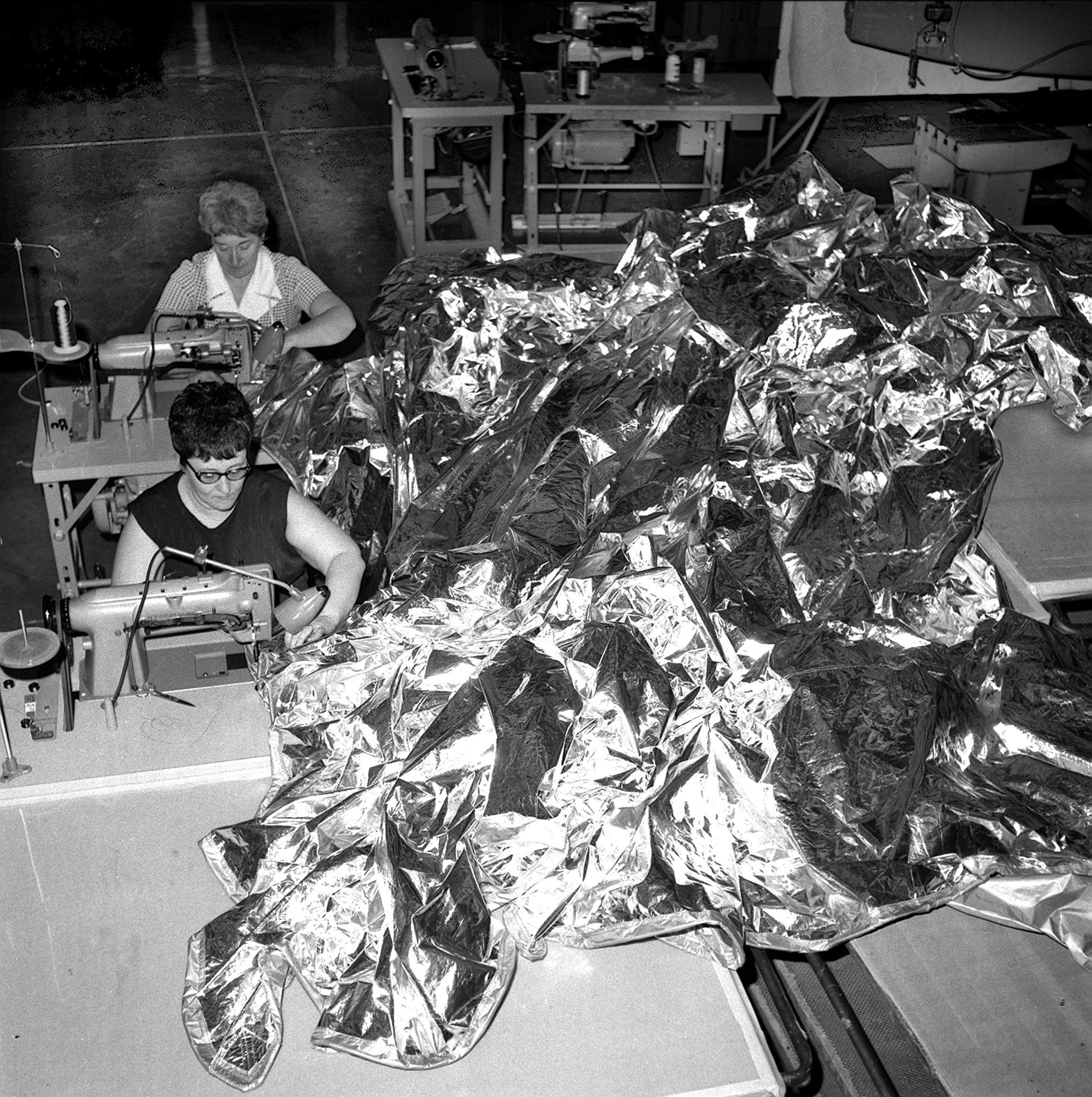In This Week’s Star
- Dynasty Continues as Marshall Wins Fifth Small Business Administrator’s Cup
- Chandra Movie Captures Expanding Debris from Stellar Explosion
- Precise Measurements On Earth Ensure NASA’s Big Spacecraft Work In Space
- Historic Tank in California, Part of Facility’s Legacy of Work on Journey to Mars
- Selma Students Complete Reading Challenge, Earn Trip to U.S. Space & Rocket Center
- Long-time Asian American Rights Advocate to Speak at Marshall May 31
- This Week in NASA History: First Crewed Skylab Mission Launches — May 25, 1973
- Obituaries
Dynasty Continues as Marshall Wins Fifth Small Business Administrator’s Cup
By Brian C. Massey
NASA Administrator Charles Bolden was at the Marshall Space Flight Center May 20 to award the 2016 Small Business Administrator’s Cup. And for the second straight year, and the fifth time in the award’s eight-year history, he awarded the cup to Marshall.
The award recognized Marshall for the work of its Small Business Program in fiscal year 2015 to promote the participation of small businesses in helping NASA achieve its goals. Marshall also won for its small business efforts in fiscal years 2008, 2010, 2012 and 2014.
“From the Space Launch System to the International Space Station to all the important work being done here day-in and day-out to support businesses large, medium and small, there is one very large conclusion we can all come to — the journey to Mars runs through Marshall,” said Bolden.
“Small businesses are playing a big part in our journey to Mars,” said Marshall Center Director Todd May. “Small businesses are the backbone of the American economy, and here at Marshall we know that they are also the backbone of exploration.”
Marshall’s fifth Administrator’s Cup cements the center’s dynasty, Bolden said. “You’re only one championship ring away from matching Michael Jordan’s Chicago Bulls.”
As with any dynasty, every team needs a superstar, like Jordan, leading the offense. For Marshall, that superstar is small business specialist David Brock.
“Brock’s leadership in supporting small business is second-to-none,” said Bolden. “You often hear me refer to him as a ‘national treasure.’ That’s because he is.”
“We have implemented many of Marshall and Brock’s programs agency wide,” said Glenn Delgado, NASA’s associate administrator of the Office of Small Business Programs, who was also on hand for the presentation. “There’s no question, of all the small business specialists, he is the best of the best.
“Marshall has one of the best small business teams in the federal government,” added Delgado. “The way they integrate industry and the senior management support is a model for the agency — as their five Administrator’s Cups can attest.”
“This achievement wouldn’t be possible without the full support of our management across all organizations,” said Brock. “Creativity can only come through collaboration. It takes a team to innovate. This award is for the team, and I give them full credit. I am lucky to be part of the team, and I thank them very much.
“Success, however, does not lie in the achievement of the success, it lies in the journey to achieve the success,” Brock said. “Today we have achieved another milestone in the program, but the journey continues. Hopefully there will be many more milestones along the journey.”
For more information about the NASA Small Business Administrator’s Cup Award and NASA’s Office of Small Business Programs, click here.
Massey, an ASRC Federal/Analytical Services employee and the Marshall Star editor, supports the Office of Strategic Analysis & Communications.
Chandra Movie Captures Expanding Debris from Stellar Explosion
Astronomers have used observations from NASA’s Chandra X-ray Observatory to create the longest movie of the Tycho’s supernova remnant X-ray evolution over time. The five different images, taken from 2000 through 2015, show the remnant’s expansion from the explosion is still continuing about 450 years later, as seen from Earth’s vantage point roughly 10,000 light years away. NASA’s Marshall Space Flight Center manages the Chandra program for the agency’s Science Mission Directorate. Using the vantage point of space, NASA works to gain a deep scientific understanding of our planet, other planets and solar system bodies, the interplanetary environment, the sun and its effects on the solar system and the universe beyond to lay the intellectual foundation for the robotic and human expeditions of the future. For more information, click here. (NASA/CXC/GSFC/B. Williams et al/DSS/NSF/NRAO/VLA)
Precise Measurements On Earth Ensure NASA’s Big Spacecraft Work In Space
By Ryan Connelly
Measurement is the first step that leads to success. If you can’t measure something accurately, you can’t understand and improve it. That is especially true for giant rockets designed to operate under extreme temperatures and pressures at liftoff or space stations the size of a six-bedroom house that must support people living and working in space for years.
Researchers at the Metrology and Calibration Laboratory at NASA’s Marshall Space Flight Center understand the importance of measurement accuracy, especially for the Space Launch System — the most powerful launch vehicle ever built that will carry humans to deep space and ultimately to Mars.
“We make sure every instrument that takes measurements during tests for the International Space Station, the Space Launch System or other NASA programs are accurate,” said Gary Kennedy, technical representative for the Marshall Metrology and Calibration program. About 96 percent of Marshall’s measurement and test equipment is calibrated through the lab in support of center operations, research and development, manufacturing and testing for NASA projects.
“For hardware to work successfully in space, it has to be tested on Earth, sometimes in harsh environments,” said Kennedy. “That means the success of the hardware in space can be traced back to our laboratory and the accurate data made during a test.”
Equipment that takes quantitative measurements is being used to test critical elements of the SLS and space station. Hardware such as the liquid oxygen tank, liquid hydrogen tank, thermal protection system and the intertank for SLS are calibrated at the calibration laboratory prior to testing, and will be evaluated after testing for comparison. This same calibration process is used to manufacture and test the life support systems on the space station, such as the Environmental Control and Life Support System, which provides air and water for the station crew.
Marshall’s laboratory is responsible for ensuring that measurement and test equipment used by its customers are calibrated accurately and have traceable measurements to a national metrological institute. A Consensus Standard, or an Intrinsic Standard makes certain that the type of measurement made at Marshall will be the same measurement made at another NASA center.
The calibration laboratory continually works with Marshall and other NASA customers to develop the most technically advanced measurement concepts and processes to successfully accomplish NASA objectives. Its personnel calibrate all types of measurement and test equipment, from specialized equipment for research and development to common equipment for everyday operations and manufacturing. These capabilities include mechanical, electrical, pressure, force and flow, along with other disciplines in 15 areas to perform more than 1,500 different types of calibration processes. For several of these unique and critical calibration processes, the lab has the only known capability in NASA and in some cases the only capability in the country.
NASA and Department of Defense Services branches conduct calibrations to ensure research and operations work safely and correctly. “Calibrations are only as good as the measurements and data collected,” explained Kirk Foster, manager of the laboratory. “Without proper and accurate measurements, none of NASA’s missions could be successfully accomplished.”
As NASA pushes the limits of space exploration, success depends on reliable and accurate measurements. NASA’s huge missions are built on the foundation of these tiny, precise measurements that inform decisions resulting in bold missions and new scientific discoveries.
Connelly, a NASA intern, is supporting the Office of Strategic Analysis & Communications.
Historic Tank in California, Part of Facility’s Legacy of Work on Journey to Mars
NASA’s Michoud Assembly Facility has been building spacecraft components for decades, helping lay the foundation for the journey to Mars. Today, this advanced manufacturing facility is where engineers are building the massive core stage of NASA’s Space Launch System rocket, which will store cryogenic liquid hydrogen and liquid oxygen to feed the vehicle’s four RS-25 engines.
Previously, the space shuttle external tanks were manufactured at Michoud. The last tank, ET-94, embarked on its final mission to commemorate past achievements in space, to educate and inspire future generations of explorers as part of a permanent shuttle exhibit at the California Science Center in Los Angeles.
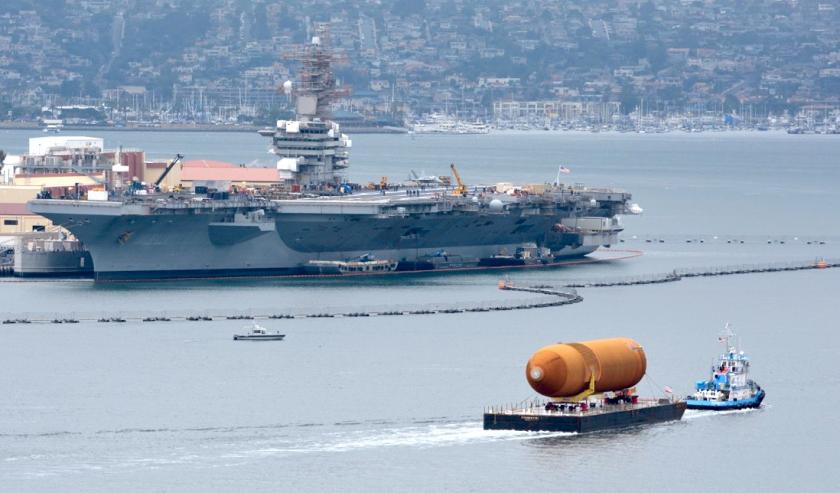
ET-94 arrived this morning to Marina Del Ray, Calif. Credits: Dennis Jenkins
The tank left Michoud by barge April 12, and arrived at the California Science Center May 19. With the addition of ET-94, the California Science Center’s Samuel Oschin Air and Space Center will be the only place in the world to view a complete shuttle stack in launch configuration.
“We are elated to have ET-94 at the California Science Center to inspire future generations of explorers with a means of reaching beyond our current limits and opening new doors of discovery from the unique vantage point of space,” said John Honeycutt, former external tank manager and current program manager for SLS. “NASA is embarking on its next step in space exploration with the Space Launch System, the new launch vehicle that will enable journeys to deep space destinations, including Mars. The external tank provided a great foundation for building the SLS core stage.”
ET-94 was designated a test article for the Space Shuttle Program in order to validate processes and procedures prior to performing the work on the next flight tank. ET-94 was a vital part of NASA’s ability to return to flight and is a testament to the ingenuity and can-do spirit of the external tank team. The external tank was managed by Lockheed Martin Space Systems of Denver, Colorado, for NASA and built at Michoud.
ET-94, a lightweight version of the external tank, measures approximately 154 feet long and 27.5 feet in diameter and weighs about 69,000 pounds. The external tank served as the structural backbone of the space shuttle and was designed to absorb and distribute over 7 million pounds of thrust generated at launch. It also fed liquid oxygen and liquid hydrogen to the three space shuttle main engines mounted on the shuttle’s orbiter.
“This exhibit of ET-94 is about inspiration and motivation, and encouraging people of all ages to dream about the possibilities, to understand that when we set our minds to it and use our knowledge of science and engineering, we can do amazing things,” said Jeffrey Rudolph, president of the California Science Center.
During the Space Shuttle Program, 135 external tanks were flown. NASA retired the space shuttles in 2011 to devote its resources to sending astronauts beyond low-Earth orbit. SLS, the launch vehicle NASA is currently building, will be the world’s most powerful rocket and designed to enable astronauts to travel deeper into the solar system, ushering in the next extraordinary moments in our nation’s story of exploration.
Selma Students Complete Reading Challenge, Earn Trip to U.S. Space & Rocket Center
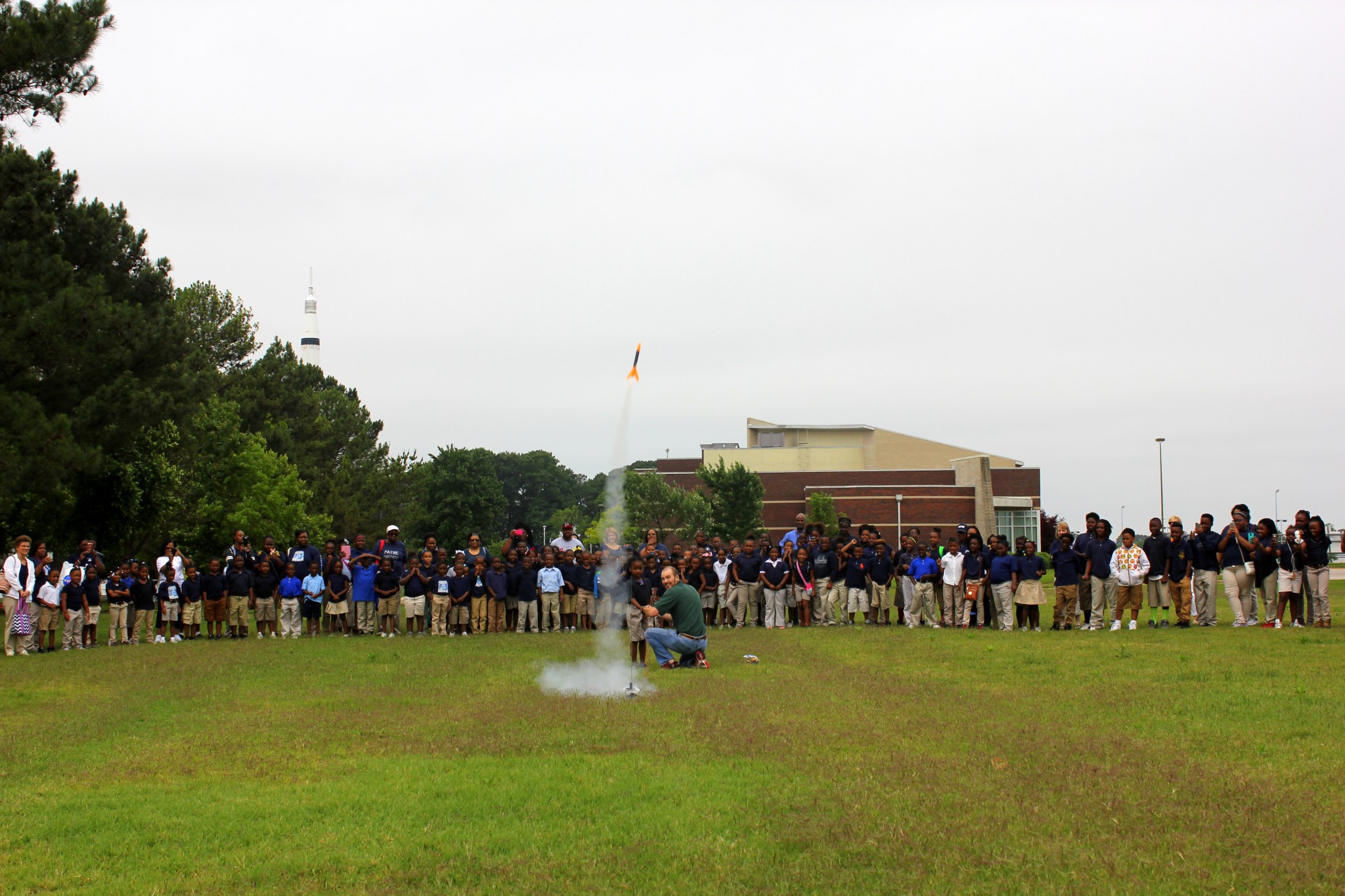
Hard work pays off as nearly 200 students from Payne Elementary School in Selma, Alabama, watch an amateur rocket liftoff at the U.S. Space & Rocket Center in Huntsville May 18. Earlier this year, the students successfully completed a reading challenge, earning the fun, educational trip. Their reward day at the Space & Rocket Center was filled with special presentations, including one by an alumnus of Payne Elementary, Larry Mack, deputy director of the Office of Human Capital at NASA’s Marshall Space Flight Center. Students also learned about NASA’s Space Launch System and the rovers on Mars with presentations by education specialists from Marshall’s Academic Affairs Office, as well as students from the Huntsville Center of Technology’s Human Exploration Rover Challenge team. (NASA/MSFC/Christopher Blair)
Long-time Asian American Rights Advocate to Speak at Marshall May 31
By Brian C. Massey
Bo Thao-Urabe, a member of the President Barack Obama’s Commission on Asian Americans and Pacific Islanders, will speak to NASA Marshall Space Flight Center team members May 31 at an Asian American and Pacific Islander Month event. It will be held in Building 4200, room P110, at 10 a.m. Following the speech, a sampling of cultural food will be provided.
As a child, Thao-Urabe immigrated to the United States with her family after the Vietnam War. Her experiences with war, immigration, poverty and gender-based violence have driven her to develop community-centered, asset-based approaches that ensure communities are fully able to participate in, contribute to and shape America.
Her community building experience includes serving as executive director for the Women’s Association of Hmong and Lao in Minnesota and Hmong National Development in the District of Columbia; working for the Federal Reserve Bank of Minneapolis to ensure new Americans have access to capital and credit; and assisting Minnesota to improve services to limited English and underserved populations.
A co-founder of Hmong Women Achieving Together, Sisterhood Laos and the Building More Philanthropy with Purpose Giving Circle, Thao-Urabe has been awarded the Newsmaker Award from the Minnesota Women’s Press, Impact Award from Hmong National Development and the Courageous Woman Award from Augsburg College.
This year’s Asian American Pacific Islander Month theme is “Walk Together, Embrace Differences, Build Legacies,” which was adopted from the Federal Asian Pacific American Council. The month-long observance is celebrated nationally in May to recognize the culture, diversity and contributions of Asian Americans and Pacific Islanders. May was chosen to commemorate the immigration of the first Japanese to the United States in May 1843, and to mark the anniversary of the completion of the transcontinental railroad in May 1869. The majority of the workers who laid the tracks were Chinese immigrants.
For more information about Asian American Pacific Islander Month, click here.
Massey, an ASRC Federal/Analytical Services employee and the Marshall Star editor, supports the Office of Strategic Analysis & Communications.
This Week in NASA History: First Crewed Skylab Mission Launches — May 25, 1973
This week in 1973, Charles Conrad Jr., Paul Weitz and Joseph Kerwin launched to America’s first space station. Upon arriving at Skylab, the crew installed the parasol sunshade — seen here being stitched together by two seamstresses — and released the solar array wing. Without the sunshade, the temperature inside Skylab’s orbital workshop became dangerously high, rendering the workshop uninhabitable and threatening the interior insulation and adhesive with deterioration. NASA’s Marshall Space Flight Center engineers and scientists worked to develop an emergency repair procedure that launched just 11 days after the incident. The NASA History Program documents and preserves NASA’s remarkable history through a variety of products — photos, press kits, press releases, mission transcripts and administrators’ speeches. For more pictures like this one and to connect to NASA’s history, visit the History Program’s Web page. (NASA)
Obituaries
Joseph S. Reaves, 83, of Huntsville, died May 16. He retired from the Marshall Center in 1989 as an aerospace engineer. He is survived by his wife, Barbara Reaves.


























